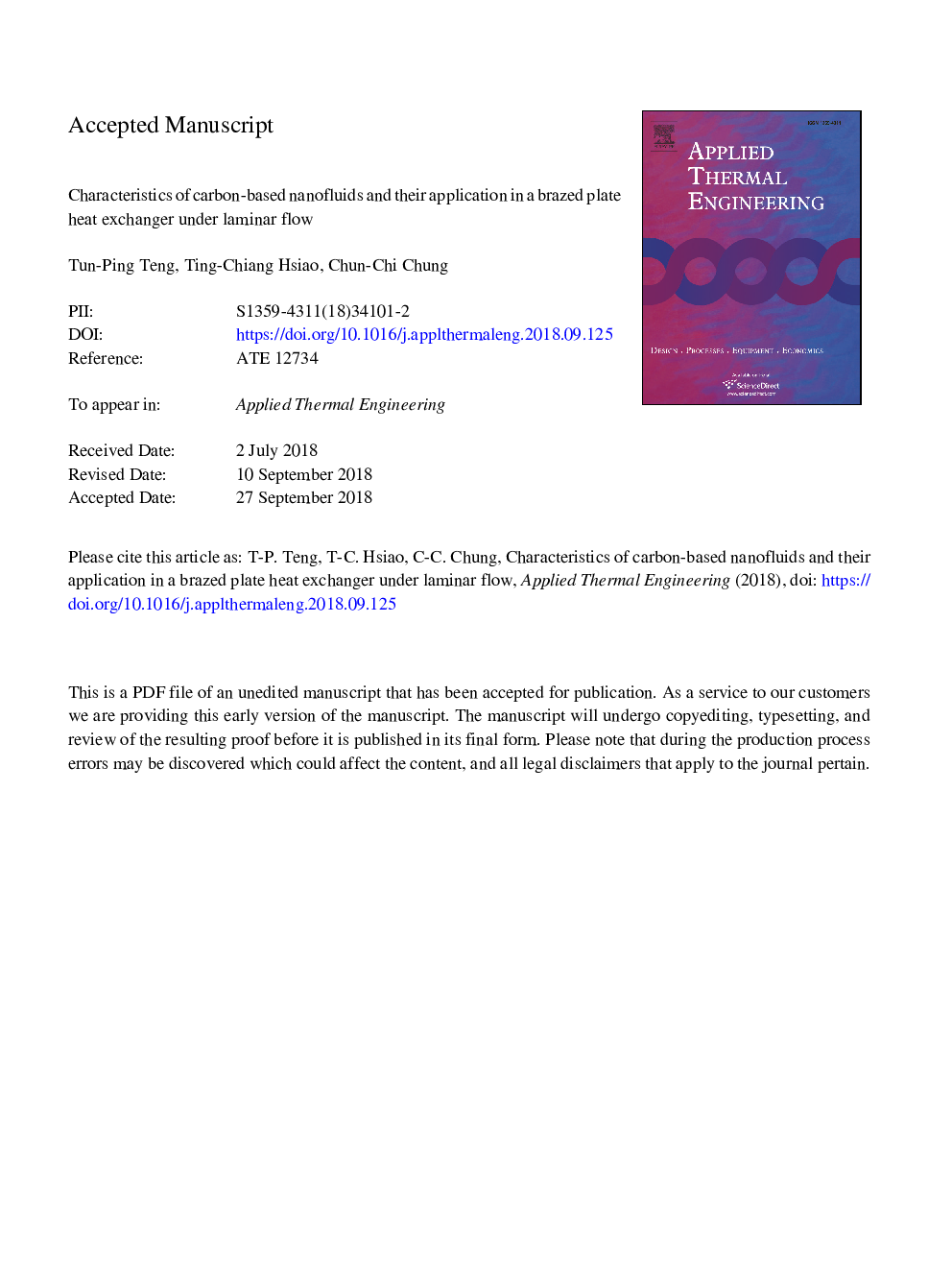| Article ID | Journal | Published Year | Pages | File Type |
|---|---|---|---|---|
| 11020810 | Applied Thermal Engineering | 2019 | 43 Pages |
Abstract
In this study, a graphite-powder-based heating and cooling processing method (GP-HCPM) was used to produce carbon-based nanofluids (CBNFs) as working fluid for a brazed plate heat exchanger (BPHE) system. Sodium dodecyl benzenesulfonate (SDBS) was added to CBNFs as a dispersant to enhance their stability, and the CBNF concentration was adjusted to 0.2â¯wt% (S1) and 0.6â¯wt% (S2). The thermal conductivity, viscosity, density, specific heat, and contact angle of the CBNFs were measured and analyzed. Finally, the CBNFs were tested in a BPHE system to evaluate the average heat exchange capacity (QÌex,avg), pumping power consumption (Pp), and system efficiency factor (SEF) under various temperatures (35, 40, and 45â¯Â°C) and laminar flow conditions. Results show that the QÌex,avg of S1 and S2 was higher than water under all experimental parameters, indicating that CBNFs exhibit a higher heat exchange performance than water. The Pp of S1 was slightly lower than that of water. The maximum QÌex,avg and SEF enhancement ratio of S1 and S2 was 7.54% and 7.98% and 9.19% and 7.28%, respectively. Considering the overall system efficiency of experimental parameters of the BPHE system, S1 was deemed more suitable than S2.
Related Topics
Physical Sciences and Engineering
Chemical Engineering
Fluid Flow and Transfer Processes
Authors
Tun-Ping Teng, Ting-Chiang Hsiao, Chun-Chi Chung,
